Anglers Booking Team
The expert copywriters at Anglers Booking have meticulously crafted this article. Our dedicated team of writers provides valuable insights and information to enhance your angling experience.
 12 minutes read
12 minutes readFlounder and Halibut are true flat beauties, sharing the same waters and making waves in the culinary world. Both have delicate, flaky flesh and are staples in coastal cuisines.
Flounder is a slender, fascinating fish with a flat body and vivid colors. It rests on shallow, sandy bottoms and is a master of camouflage, blending in almost magically. Halibut is similar enough that anglers often mistake it for Flounder, yet it's distinct in its own right.
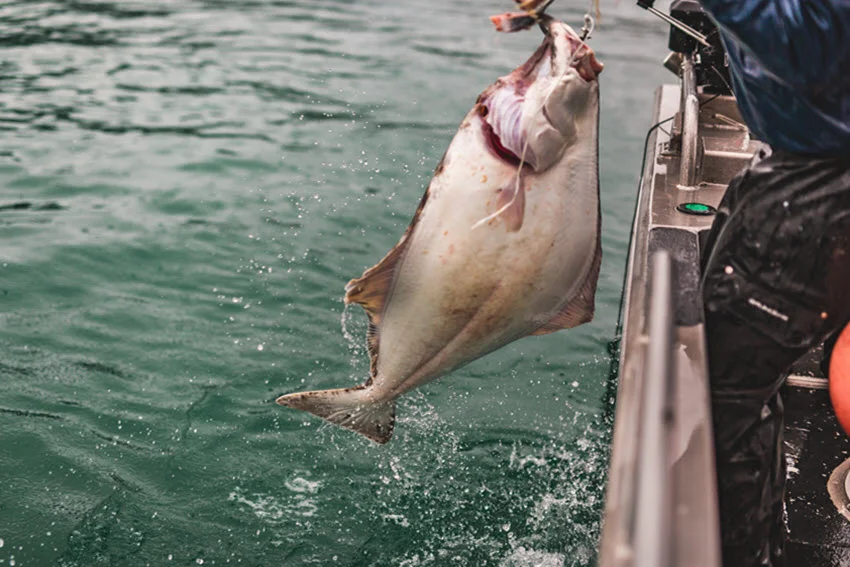
In the world of metaphors, Flounder is the charming underdog, while Halibut stands tall as the majestic heavyweight. These flatfish may look alike at first glance, but their differences run deep. Whether you're a fan of these species, have never seen them, or are simply curious, you're in for a fascinating journey.
It is common in complex marine worlds for two fish to look alike but behave and live in entirely different habitats. It's the same here. Flounder relies on its cunning and ability to blend perfectly into its surroundings, while Halibut uses its size and strength as the true king of the seabed. But those differences are just the beginning!
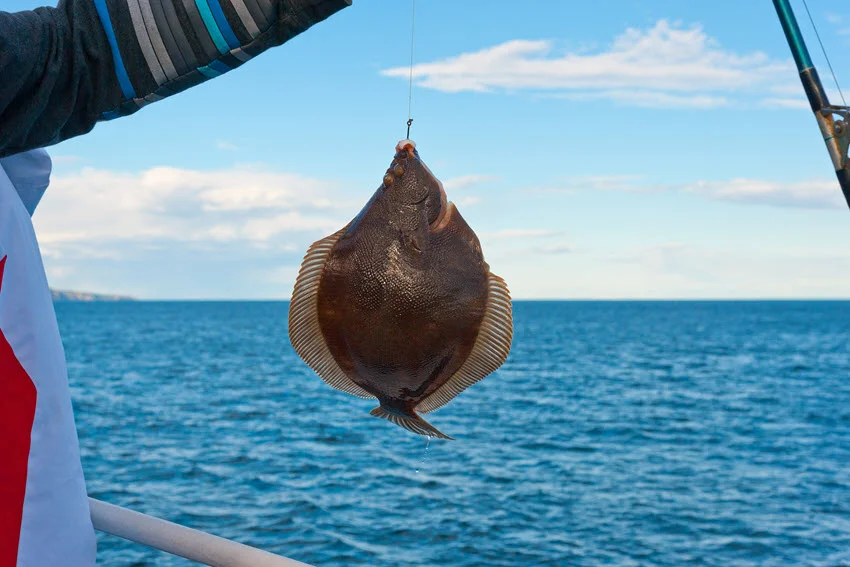
The difference in size between these two fish is more than evident. Flounders are smaller and more subtle, but they stand out with their unique charm. They look lovely, usually 12 to 24 inches long, and rarely exceed 10 pounds. Their compact size makes them the perfect catch for inshore fishing, and they are often considered a real little gem.
On the other hand, Halibut is anything but subtle; more precisely, it is an absolute beast among flat fish. It can grow to an incredible 8 feet and weigh over 500 pounds! Of course, these are the extreme reaches of its biological power, and the average catches are much smaller, but even the average Halibut often goes 50 to 100 pounds. This makes it a real challenge and a catch to remember.
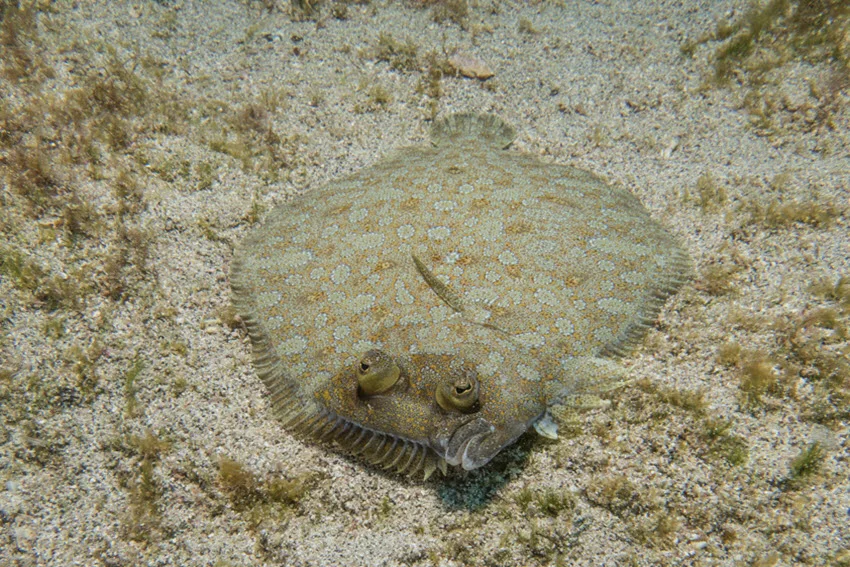
Regarding color and markings, Flounder and Halibut each have unique styles adapted to their environments. Flounder is a master of camouflage, often changing its appearance to blend in and become nearly invisible. When not actively shifting color, the upper side is a shade of brown, helping it merge with sandy or muddy seabeds. The underside is white, providing added camouflage from both predators and prey.
Halibut, on the other hand, are gentle giants of the deep. They are more uniform in color, ranging from dark brown to olive green, while the bottom is white. Unlike Flounder, Halibut lacks prominent points or markings, which makes it look more complete. Both fish share coloring strategies as an adaptation to the environment, helping them to survive. Coloring also serves as protection and a way of hunting.
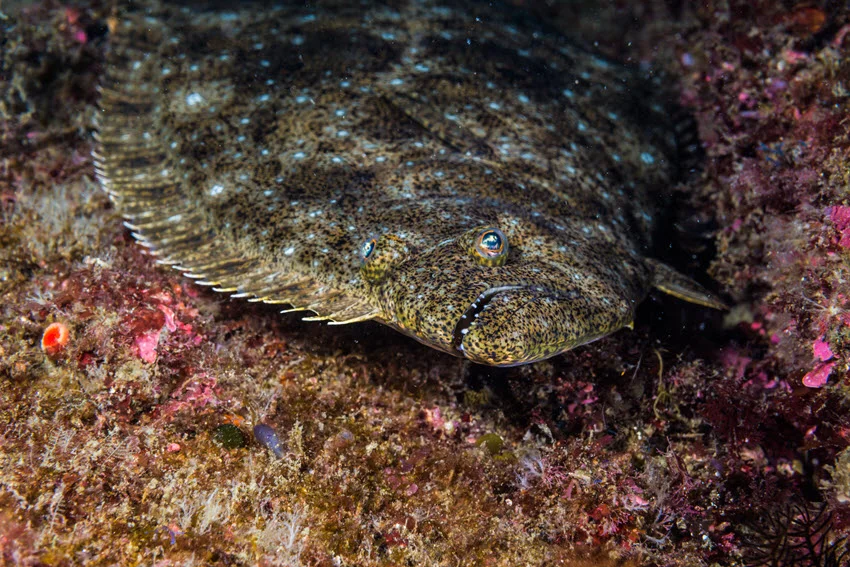
Regarding the length of life, both fish follow their size. Flounder, as a smaller species, has a shorter life span, usually between 3 and 10 years. Their life cycle is faster, but they are still durable, especially when they adapt well to their environment, which is why they are very interesting for anglers.
Halibut, on the other hand, is slower but longer-lasting. These fish can live up to 50 years, making them true veterans of deep waters. Their slower growth rate and size allow them to live surprisingly long lives, another reason they make great trophy catches. The difference in lifespan reflects their different strategies of survival and evolution in different marine conditions.
Both fish are perfect matches for their preferred habitats, and this is also what makes them interesting. Both dominate the seabed, with Flounder preferring shallows near sandy or muddy shores and Halibut dominating in deeper, cooler waters. Let's dive deeper into how these two flatfish manage in their different habitats.
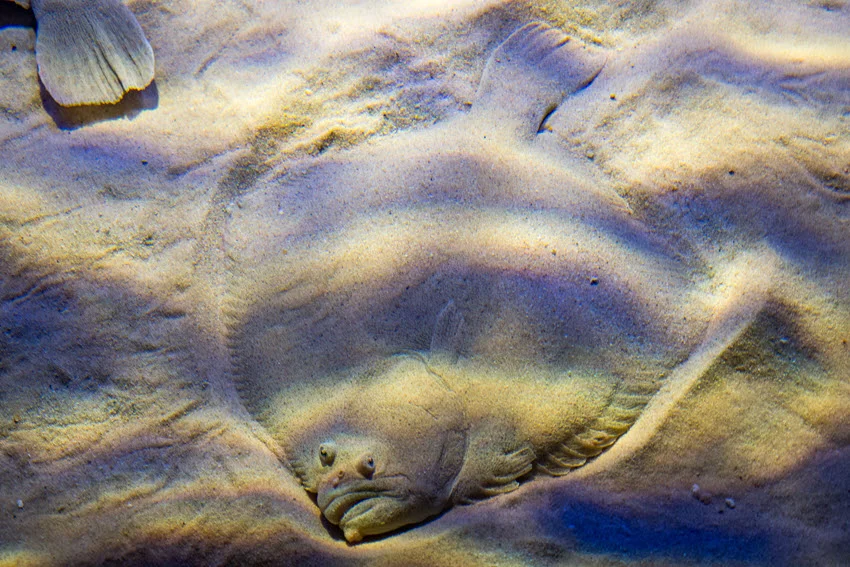
Flounder is a typical bottom fish in shallow, coastal waters, especially on sandy or muddy bottoms where it can easily blend in with its surroundings. You will find them in estuaries, bays, and tidal flats. Their ability to camouflage helps them lure small fish and crustaceans to come close to them. You will often see Flounder from the Gulf of Mexico to New England and parts of the Pacific.
Halibut prefers much deeper, cooler waters and swims in the North Pacific and North Atlantic, ranging from Alaska to California and across the Atlantic to Norway and Greenland. It often stays close to the bottom of the ocean but occasionally goes out into the open water in search of prey. Their survival tactics are less about stealth and more about power when using its size and strength. Although both fish have their habitats, each is the master of its domain, perfectly adapted to the environment.
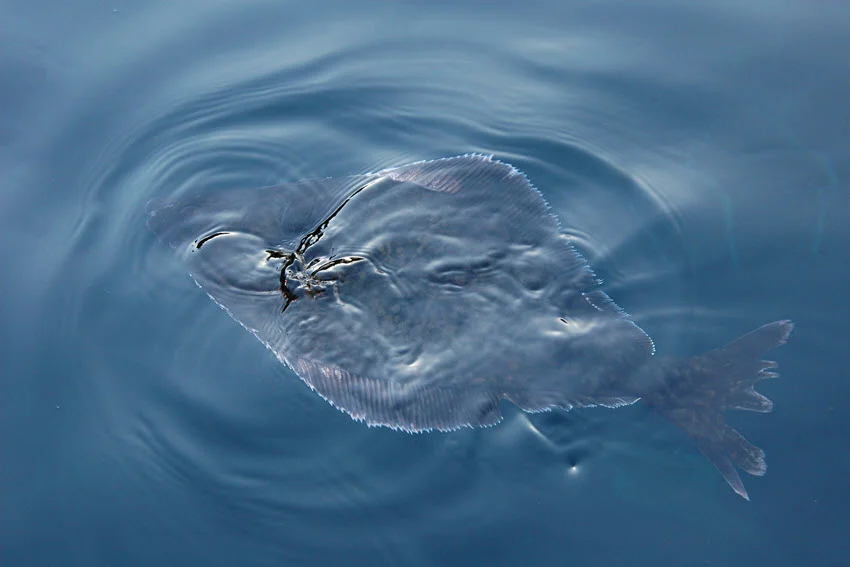
Both fish change their behavior, which primarily includes activities related to the frequency and rhythm of feeding. Both species are present throughout the year, but their migrations and diet can be unpredictable and are primarily guided by food and survival. That's why we give you a short overview of seasonal trends to help you coordinate your technique and choose the best bait at the right time.
Spring brings new life to the waters, and both Flounder and Halibut become more active. Flounder move to shallow coastal areas with sandy or muddy bottoms, feeding heavily and becoming easier to catch. Halibut also leave deeper winter zones, heading into cooler shallows to follow prey. It's a great season to target both, as their activity and feeding patterns make them less cautious.
Flounder stays in warmer, shallow waters, sheltered by mud or sand during the summer. They are often found near coastal inlets and estuaries, where food is plentiful. Summer Flounder fishing requires patience, as they use their super camouflage power more than ever. Halibut stays in deeper waters at this time because the cold temperature helps its size and slower metabolism. It is still aggressive and feeds mainly during the early morning hours.
As waters cool in fall, Flounder begin moving to deeper areas and gradually slow their feeding, preparing for winter. Halibut stays active and continues feeding, though more cautiously. Fall is ideal for patient anglers, as both species are still catchable but less aggressive.
During the winter, Flounder almost entirely retreats to the deepest, calmest parts of the water, where it blends in with its surroundings. While winter fishing is still possible, it's challenging and requires plenty of patience along with the right approach. Halibut behaves similarly, moving to cold, deep areas where conditions are more stable. Both species become far less active, so winter may be better spent targeting other fish.
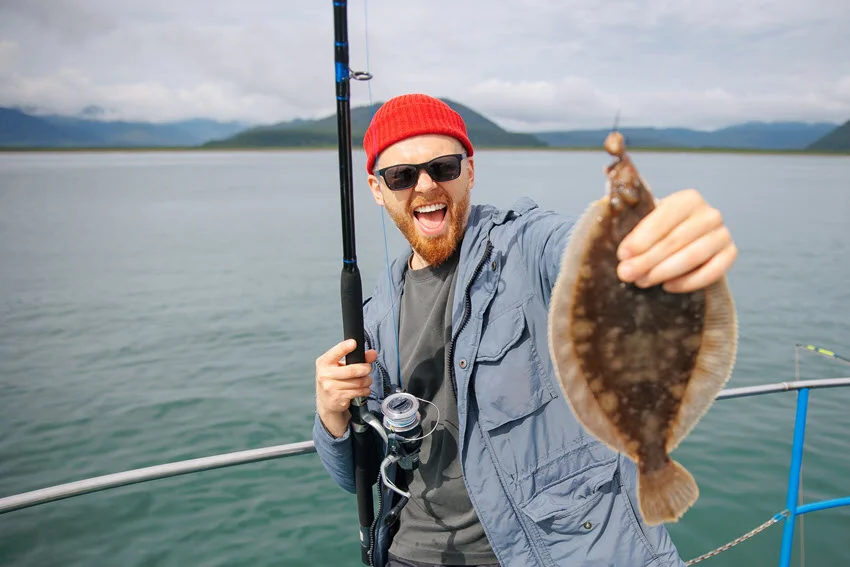
The best time to catch Flounder and Halibut is when they are most active and the food is most abundant. For Flounder, it is during the spring and fall, during the transition months, when they persistently look for food.
As for Halibut, it is spring and summer. Winter fishing is challenging in the spring, when it moves to shallower, colder waters, and during the summer, when its activity and aggressiveness peak in deeper waters. Although it is not impossible, it requires a detailed strategy with the right gear and patience, so you must decide if it is worth it.
Flounder and Halibut share many similarities, but not regarding feeding and hunting. With its flat body and ability to camouflage, Flounder patiently waits for prey to come along, lying motionless on the bottom. When the prey approaches, it reacts in a flash. Halibut is much more open, ie. It uses its enormous strength and size to follow, often passing fish or smaller fish moving on the seabed. Flounder is the champion of the game of hide and seek, and Halibut dominates with force and speed.
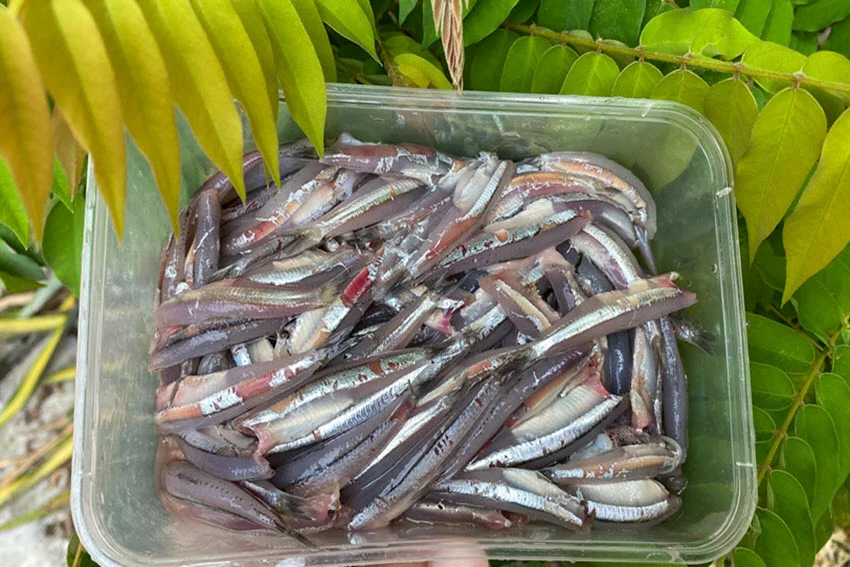
Flounder feeds on different types of marine organisms, depending on availability. It is not very picky; its diet includes small fish, such as herring and anchovies, but also catches crabs, shrimps, and many other small fish. Sometimes, you can also catch cephalopods, such as squid. The way of eating depends on the time of year, and it eats mostly during spring and summer, while in winter, it retreats deeper and slows down the metabolism.
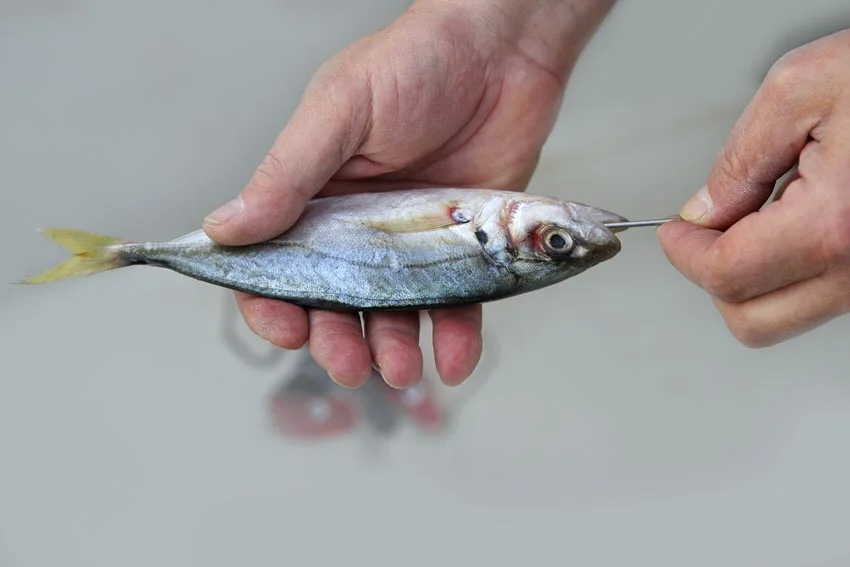
Halibut is a true deep-sea predator that targets larger meals. Its diet consists mainly of fish, including herring, salmon, mackerel, and anchovies, but it also likes to hunt crustaceans and cephalopods. It won't repel squid or octopus, either. Like Flounder, Halibut eat most during the warmer months, when they catch whatever they can find and build up stocks in the fall and winter. Both fish adapt their diet to the circumstances, but the Halibut is decidedly more aggressive and hungry. At the same time, the Flounder remains a master of surprise, waiting for the perfect moment to strike.
Flounder and Halibut can be caught using the above or similar techniques, but with a slightly different setup. Here are some of the best methods for catching these popular fish.
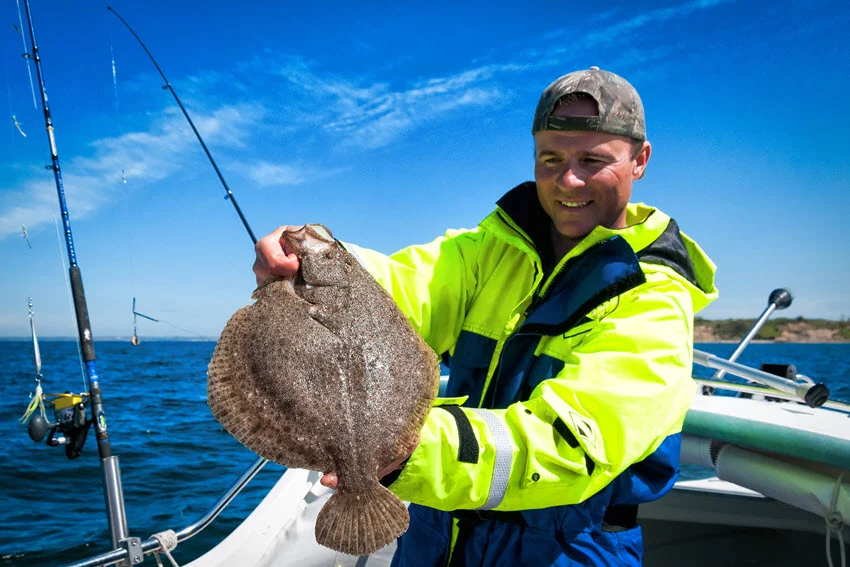
The most effective technique for hunting Flounder is bottom fishing using heavy baits such as shrimp, worms, or small fish lowered to the sandy or muddy bottom, where the Fish likes to hide and where it usually fishes. Another excellent technique is drift fishing, where the bait naturally moves with the current, which seems very attractive to this fish. Always relying on live bait such as anchovy or herring can significantly increase the chances of a successful catch.
For artificial baits, there is jigging, where metal lures are lowered to the bottom and pulled quickly and erratically, imitating a wounded fish. Flounder will pretend that it is an easy and slow prey and will probably react. A prevalent method is Flounder gigging, done by night and with special gear, but before you try this, make sure you have all the licenses.
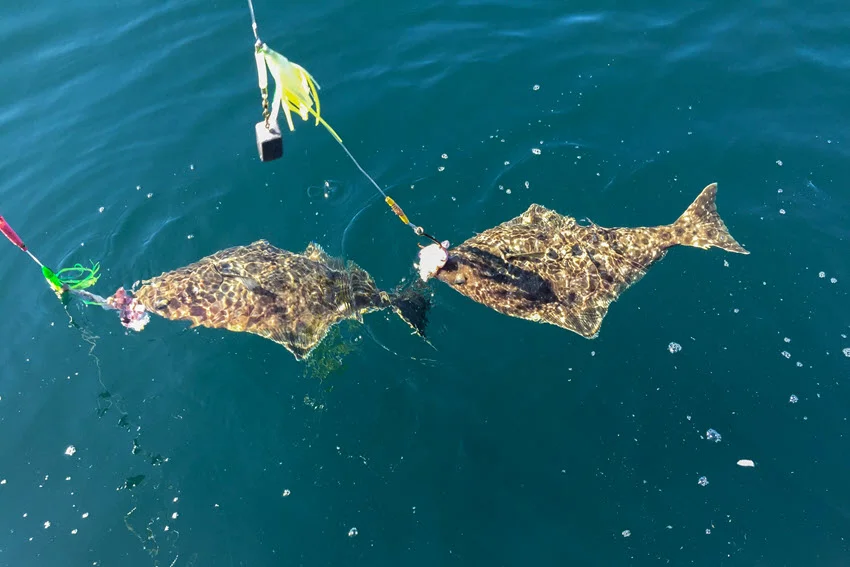
Halibut is also primarily caught by bottom fishing, but requires a slightly more robust approach. The key is using heavier leads and stronger rods, as Halibut can be significantly more extensive and potent than Flounder. Use squid, herring, or shrimp as bait.
One of the most popular techniques for Halibut is trolling, where artificial or live baits are used. The bait can be presented at different depths, imitating the fish's natural movements. Trolling is especially effective in deeper waters, where Halibut most often hunt. For areas with strong currents, drift fishing is also helpful, where the bait moves naturally and attracts the attention of this large predator.
Relatively similar fish that require significantly different equipment. This speaks even more about their strangeness and how delicate ocean life is. We have selected the safest options for you.
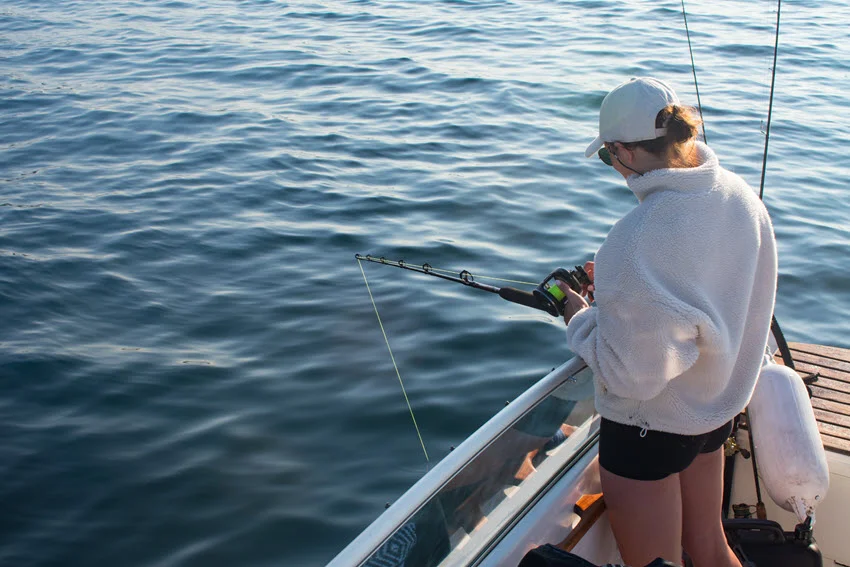
Flounder are delicate fish that require precision and cunning to catch. Although they may live on the bottom, they need finesse to catch effectively. Here is our idea of the ideal setup for this fish.
With this gear, you will be ready for a successful day of fishing. You will feel every twitch and bite, and hopefully, you will land a Flounder.
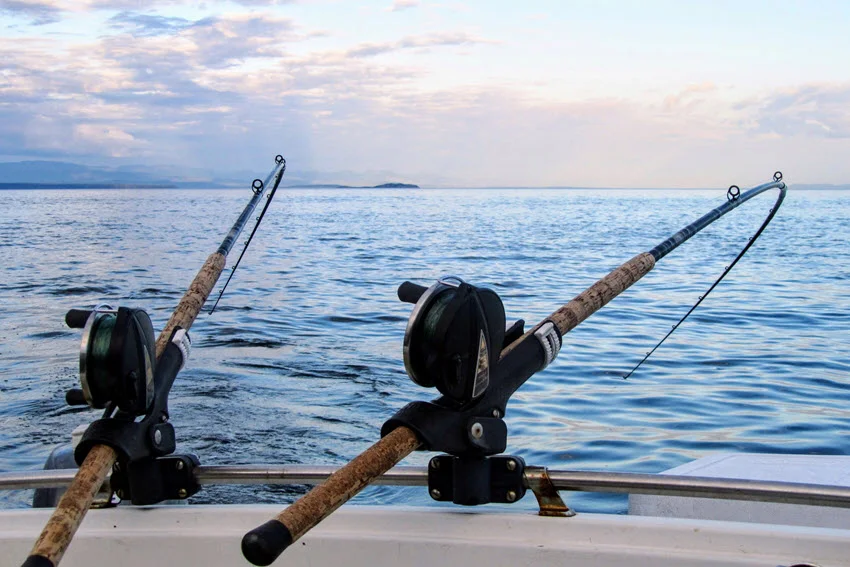
Compared to Flounder, Halibut is a bigger, more robust fish that is often found in deeper water. Therefore, your gear must be up to the challenge:
This gear setup will be enough for you to confidently challenge one of the toughest ocean fighters.
If some fish have meat that melts in your mouth and reminds you of a dessert, then it is Flounder and Halibut. But as is usually the case, even subtle differences are differences, so let us present you with a detailed taste profile of these fish.
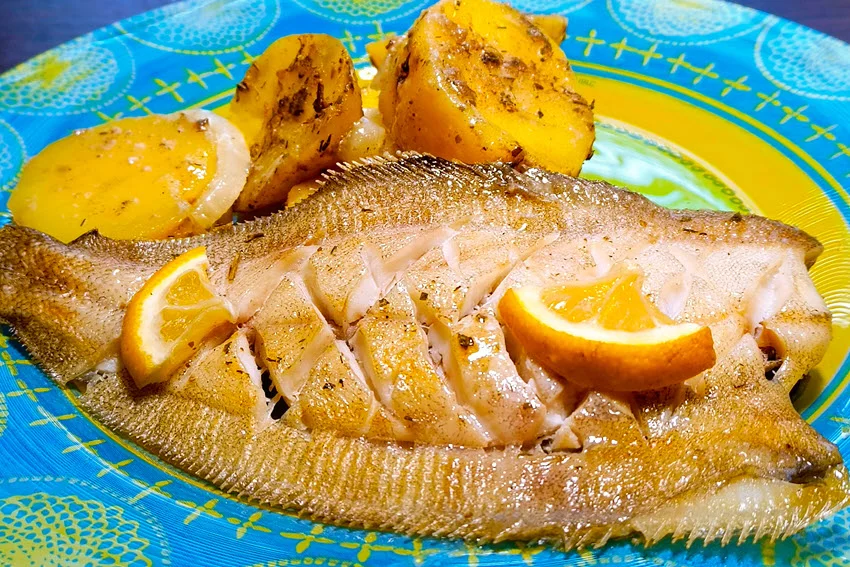
Flounder meat is slightly sweet, tender, and fluffy. Its light flavor makes it incredibly versatile and appealing to those who enjoy subtle, refined seafood dishes. Flounder pairs well with various spices and ingredients, allowing the natural flavor to shine without overpowering. The Flounder is mainly prepared by baking it in a pan. Its thin, tender fillets are cooked quickly, thus preserving the tender texture.
Simply roll the fillets in seasoned flour or breadcrumbs and fry them in butter or oil until golden brown and crispy. You can also grill or steam them, often with lemon, garlic, and fresh herbs, to enhance their light, natural flavor. No matter how you cook them, the subtle sweetness of Flounder makes it the basis of many light meals and salads, and it's not heavy on the stomach, so it's tough not to like this fish.
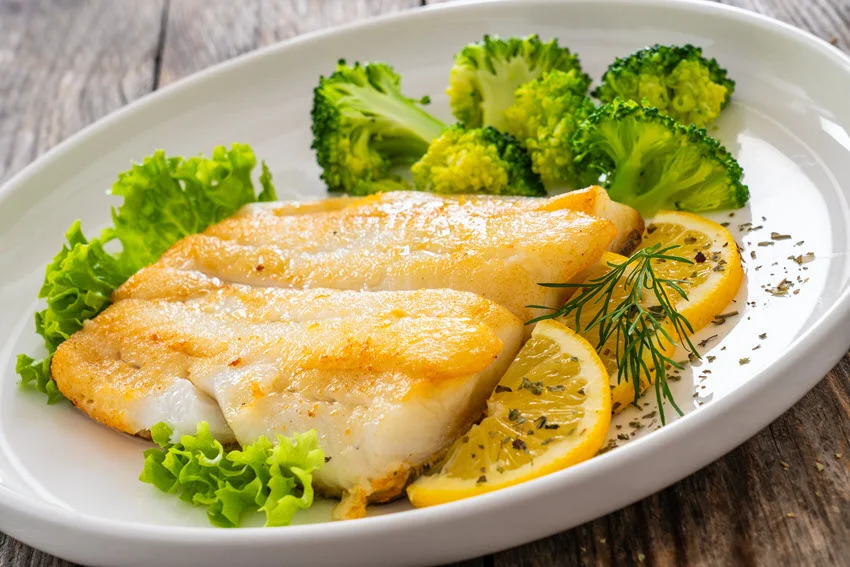
Halibut boasts a mild, slightly sweet flavor with a firm, meaty texture that can withstand higher temperatures and different cooking methods. Its meat profile, which makes for a clean, almost buttery flavor, makes it a favorite among those who enjoy seafood with a more substantial but not overpowering taste. Its meat is perfect for absorbing marinades and spices, so grilling is the most popular way to prepare Halibut.
Firm filets withstand the grill's heat without falling apart, allowing for a lightly charred exterior while the interior remains juicy and flavorful. Standard pan-roasting and even poaching are excellent options, with sauces like lemon butter or caper cream. Halibut's adaptability and satisfying bite make it an ideal choice for seafood lovers looking for something hearty yet subtle and elegant.
It may seem evident that Flounder is more accessible to catch and an excellent fish for beginners, that is, for more experienced anglers who want to have fun without too much fuss and catch a superb fish for dinner. Although tastes and preferences in fishing are different everywhere, we still distinguish what a fishing duel with these fish brings to beginners and experienced ones.
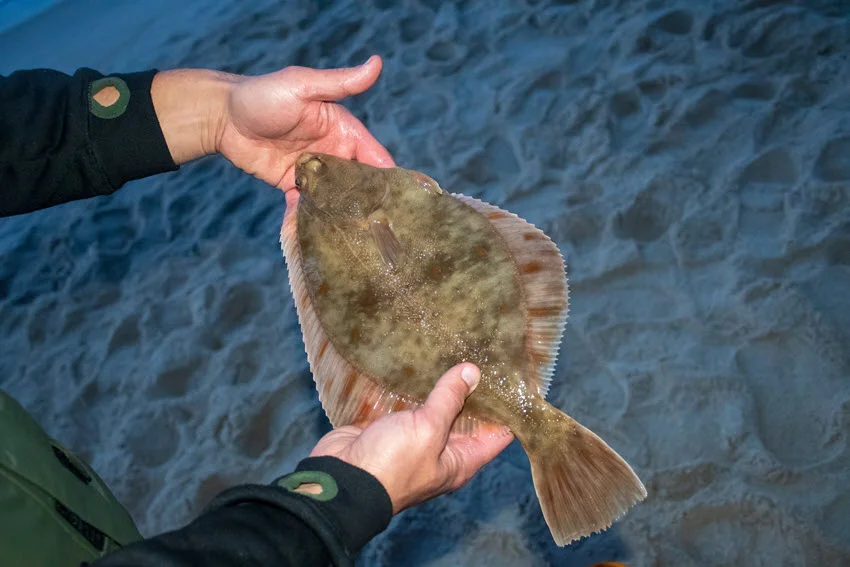
Starting your fishing trip can be an exciting adventure, and you must choose a challenging and rewarding species. Let's find out if Flounder and Halibut can do it.
Flounder is an excellent choice for beginners. It is an interesting fish that is neither overly complex nor heavy.
Why choose Flounder?
Flounder is readily available with essential equipment and simple techniques that you can experiment with. Its moderate resistance and attractive behavior help develop basic fishing skills.
If Flounder seems unworthy or dull, focus your beginner's luck on the more significant and challenging Halibut.
Why choose Halibut?
Everything is a matter of perspective, so it is with fishing challenges. It is also true that both of these two fish should be considered, whether you are a beginner or an experienced angler.
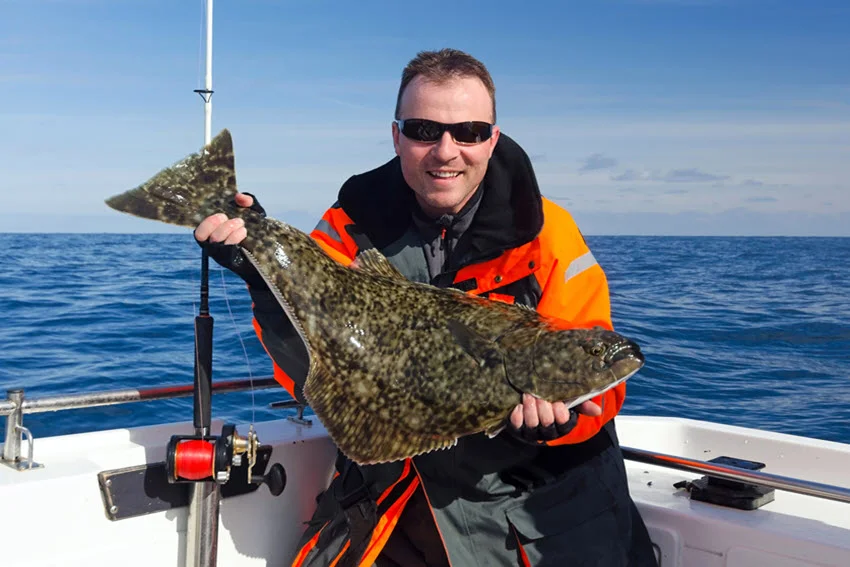
For those with more fishing experience, both fish have tricks for exciting challenges and ultimate fishing gameplay at a slightly more advanced level.
Experienced anglers will know that Flounder is a delicate fish, just as it looks, which only adds to the challenge. There are many species of Flounder, and their resourcefulness and fascinating power of camouflage inspire deep admiration among anglers.
Why choose Flounder?
Thanks to its camouflage ability and subtle bites that require skill and precision, the List presents the ultimate challenge for experienced anglers.
As Flounder's older brother, Halibut is noticeably more powerful and prominent, presenting a different challenge requiring skill and strength.
Why choose Halibut?
Both fish offer something specific and unique, so whatever your choice, with your experience, you can hardly go wrong.
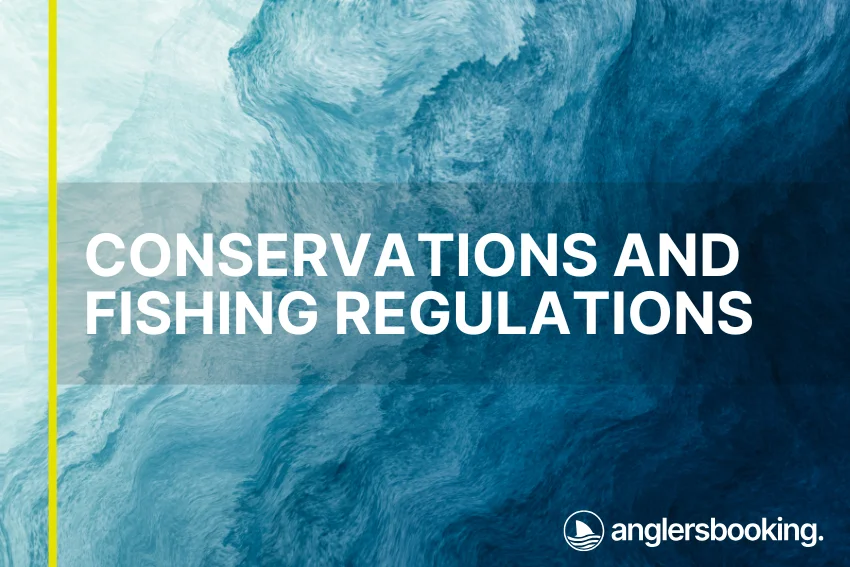
Understanding fishing regulations and preserving specific fish species contributes to protecting fish populations and ecosystems and promoting responsible angling practices.
Anglers Booking team
Both fish are subject to significant conservation efforts and fishing regulations because they are threatened in certain regions. Size limits, daily bag limits, and closures during spawning periods usually control the Flounder fishery.
Halibut, especially the Pacific and Atlantic species, face even stricter regulations due to their slow growth and long lifespan. Restrictions include daily catch quotas and seasonal limits, and many regions use quota systems to prevent overfishing.
All actions aim to maintain a healthy population of these two fish without jeopardizing sustainable fishing practices for an extended period. For Flounder, conservation measures include the application of catch limits, minimum size requirements, and seasonal closures to protect spawning periods.
Conservation efforts for Pacific and Atlantic Halibut are more rigorous because of their slow growth. Quota systems regulating commercial and recreational fishing, size limits, tagging programs, and ongoing stock assessments are critical to monitoring migration patterns and overall population health.
The National Oceanic and Atmospheric Administration (NOAA) has jurisdiction over fish species such as Flounder and Halibut, associated with fisheries in United States federal waters. Through its National Marine Fisheries Service (NMFS) subsection, NOAA regulates and oversees commercial and recreational fisheries, including quotas, size limits, fishing seasons, and other conservation measures.
Regulations for the conservation of Flounder and Halibut vary by location and state, and the simplest way for anglers to contribute is to comply with and act according to local fishing regulations. There's also catch-and-release practice, using sustainable gear like circle hooks and proper fish handling.
Anglers can get involved in various actions, report illegal fishing or any oddities they notice, donate significant funds, and become more actively engaged in promoting sustainable fishing. It is essential not to leave parts of the gear and, in principle, to take care of everything you do during fishery because it is not just Flounder and Halibut; it is a complex network that influences each other. Thus, anglers play a key role in preserving the fish population for future generations.
By now, it is clear that both fish are unique, but they unite in specific, elegant movements and behaviors! Halibut will surely bring more meat to your table, Flounder is a sleek delicacy, and every fish will fight best of its nature and character to survive!
Tell us in the comments which is your winner, why, what repels or attracts you to both fish, and where you had the best catch! We expect a detailed report from you! Happy fishing!

The expert copywriters at Anglers Booking have meticulously crafted this article. Our dedicated team of writers provides valuable insights and information to enhance your angling experience.
Embark on unforgettable fishing adventures with us at Anglers Booking.
book your charterOctober 17, 2025
October 15, 2025
October 10, 2025
October 11, 2025
October 4, 2025
September 29, 2025
September 25, 2025
September 21, 2025

You're now part of our exclusive community. Get ready for premium content and updates straight to your inbox.
close
Subscribe to our newsletter and receive a selection of cool articles every week.
Please enter a valid email address.

Be the first to know when we're back in action.
Please enter a valid email address.
Leave a Comment
Your email address will not be published. Required fields are marked *
Thank you for your comment! It has been submitted for review and will appear on the site shortly.